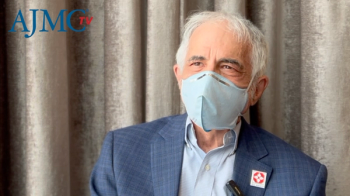
Health Care Access, Preventive Care Similar in MA and TM for Low-Income Adults
The analysis of adults with low income enrolled in Medicare Advantage (MA) or traditional Medicare (TM) indicates that increasing enrollment in MA may not advance health equity in the Medicare program.
There is largely no difference among key measures of health care access and preventive care for adults with low income enrolled in Medicare Advantage (MA) compared with those enrolled in traditional Medicare (TM), according to a recent study of Medicare beneficiaries published in JAMA Network Open.
Adults with low income enrolled in the Medicare program experience worse health outcomes than adults with higher incomes due to substantial barriers faced in accessing and affording health care.
Considering the rapid increase in enrollment of adults with low income in the growing MA program, understanding barriers to health care among MA and TM is critical as policy makers evaluate ways to improve healthy equity in Medicare, the authors explained.
“Several aspects of MA may disproportionately benefit adults with low income, including the prevalence of zero-dollar premium plans, increased care coordination, and the provision of supplemental benefits, including dental or vision, transportation, and other services,” they wrote. “Conversely, some aspects of MA plans, such as more restricted networks, may impede access to care for adults with low income and may potentially widen inequities.”
This cross-sectional study focused on 2622 adults aged 65 years or older with low income enrolled in MA or TM plans who responded to the 2019 National Health Interview Survey (NHIS). A secondary statistical analysis was conducted to compare measures of health care access, preventive care use, and health care affordability among those enrolled in MA and TM.
The proportion of adults with low income who delayed medical, dental, or vision care due to cost was similar between MA and TM plans: 5.3% in MA vs 5.7% in TM delayed medical care, 27.9% in MA vs 28.2% in TM delayed dental care, and 66.6% in MA vs 64.7% in TM delayed eye examinations. Although MA enrollment was associated with a slightly higher likelihood of having a usual place of care (97.7% vs 94.9%) and recent cholesterol screening (98.7% vs 96.6%).
The authors also found no significant differences in cost-related barriers to prescription drugs between those enrolled in MA and TM. Less than half (47.3%) of those enrolled in MA compared with 44.2% of those in TM reported being concerned about paying medical bills and 17.1% in MA compared with 17.2% in TM reported having problems paying medical bills.
Although MA offers dental and vision coverage as supplemental benefits, there were no observable differences in the proportion of adults who delayed dental care or eye examinations because of cost between those enrolled in MA and those enrolled in TM.
A larger proportion of beneficiaries of both MA and TM experienced difficulty in accessing dental and vision care compared with other forms of medical care, though participant awareness of MA supplemental benefits could be a factor in these results, the authors surmised.
As MA is thought to have higher costs per beneficiary than TM for the federal government, these findings could indicate that MA plans do not provide benefits commensurate with the increased costs, they wrote. MA plans performed better on only 2 out of 17 studied quality measures (usual place of care and recent cholesterol screening) tracked by MA plans for determining star ratings and reimbursement.
One potential reason for the lack of difference among most outcome measures is the existing upstream barriers that could make health care inaccessible and unaffordable for adults with low income regardless of their health insurance benefits.
Additionally, more than 80% of Medicare beneficiaries have supplemental insurance. The prevalence of supplemental insurance in TM may explain the minimal difference in key measures between MA and TM plans, despite MA plans offering more comprehensive insurance coverage and benefits than TM alone.
The authors noted that it is possibility that MA plans are achieving similar or slightly better metrics compared with TM plans while enrolling a higher proportion of beneficiaries from racial and ethnic minority groups. This study found that MA beneficiaries with low income were approximately twice as likely to be Hispanic adults, a growing demographic segment facing historically poor access to health care with significant barriers.
While the considerable variability in plan design within MA and the potential for response bias in survey data are limitations of this study, the authors cited the focus on a subset of beneficiaries who were likely to be more similar across plans, especially regarding socioeconomic factors, as a strength.
“Despite more generous benefits and stronger incentives to coordinate care and manage health, MA plans may not provide meaningful improvements in access, affordability, or preventive care compared with TM for adults with low income,” the authors concluded.
Reference
Aggarwal R, Gondi S, Wadhera RK. Comparison of Medicare Advantage vs traditional Medicare for health care access, affordability, and use of preventive services among adults with low income. Published online June 7, 2022. JAMA Network Open. doi:10.1001/jamanetworkopen.2022.15227
Newsletter
Stay ahead of policy, cost, and value—subscribe to AJMC for expert insights at the intersection of clinical care and health economics.

















































